Researchers have discovered a great cavity inside the largest pyramid of all, the Cheops pyramid in Egypt. The discovery was made harnessing the elusive particles known as muons .
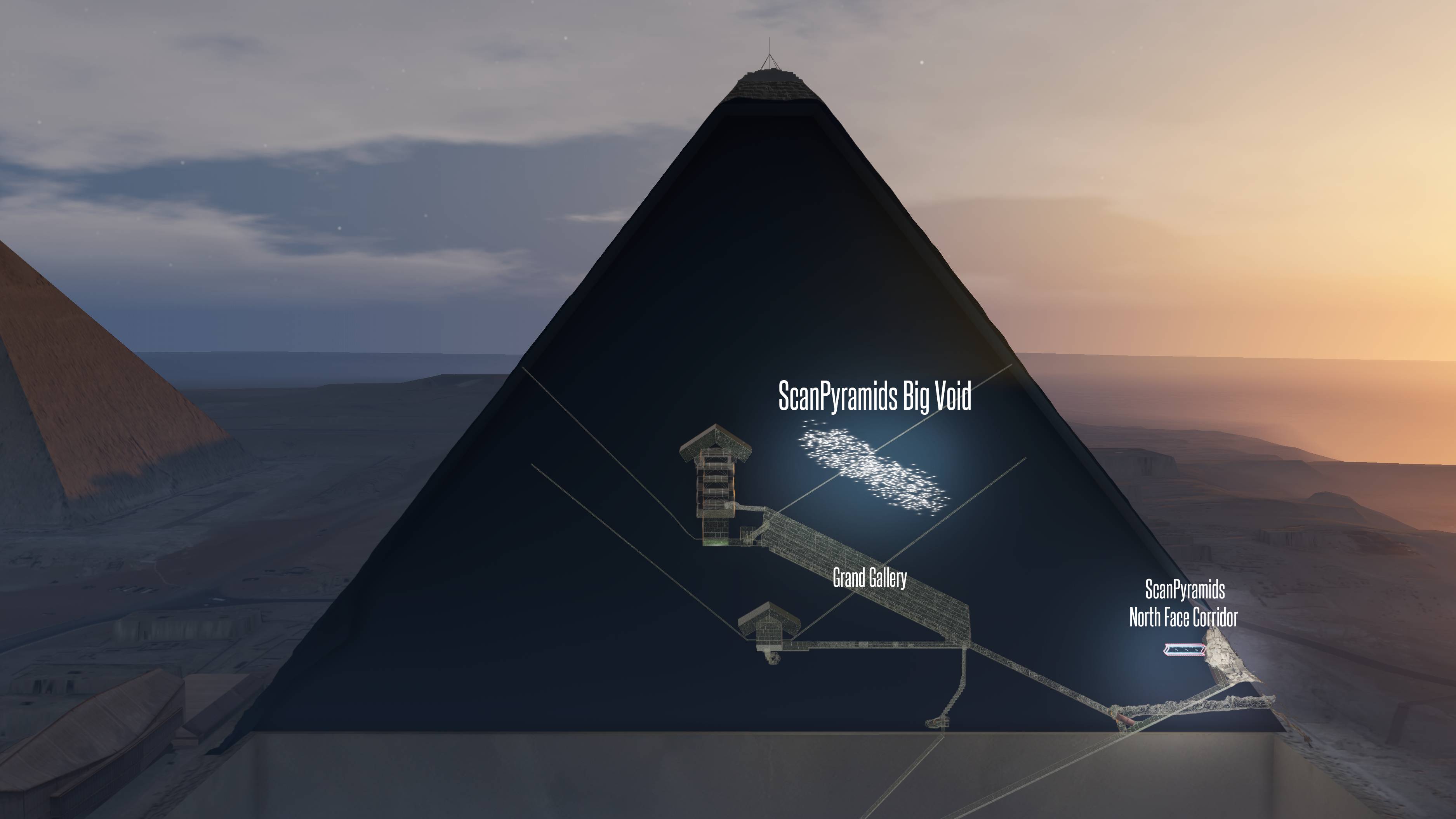
Although the Cheops Pyramid is one of the oldest and largest monuments of all time, it is still unclear how the pyramid was once built.
It’s not a simple task to find out what something looks like if this “something” consists of countless of 2,3 million stone blocks, each weighing 2.5 tonnes.
Japanese, Egyptian, and French scientists have – for the first time – take advantage of advanced particle physics to find out what is possibly hidden behind the seemingly impenetrable stone blocks.
The ScanPyramids project is an international mission under the authority of Egypt’s Ministry of Antiquities, launched in October 2015, it aims to non-invasively peer into Egypt’s largest pyramids using a battery of technologies.
The researchers found, deep inside, above the “chamber of the king”, that there is a void at least 30 meters long. This cavity is the first major structure found within the Cheops Pyramid since the 19th century.
The researchers, who report their findings in the journal Nature, used muons to probe deep into the pyramid. These particles originate from cosmic particles, cosmic radiation, that move through the universe at speeds close to the speed of light. When the particles collide with the atmosphere, tiny particles called muons are formed.
These are elementary particle similar to the electron, with an electric charge of −1 e, but with a much greater mass. Any random person on Earth is struck by tens of muons every second, they go through everything and can even be detected several kilometers down inside the Earth, deep down in mines.
Myones can thus penetrate stone, but their paths are different depending on whether they fly through hard materials or empty air, which makes it possible to harness them to distinguish cavities inside a completely solid formation.
In order to ensure reliable results, the study was conducted using various research teams who conducted three independent investigations based on different methods that all included the use muons.
The result was the same for all three teams: somewhere above the “chamber of the king” in the Cheops pyramid, there is a cavity measuring at least 30 meters long and at least as wide as the known chamber below it, that is, a few meters wide. What the purpose of this cavity is, is unknown.
“We know that this big void has the same characteristics as the grand gallery,” “It’s really impressive.”
– Mehdi Tayoubi at the HIP Institute in Paris, a non-profit organization that draws on new technology to study and preserve cultural heritage.
Why there is a room there – and what it contains – are questions that researchers around the world would want to answer. It remains to be seen if any archeological efforts will be undertaken and if physical access to the chamber will be granted by the proper authorities.
In addition to finding the hidden chamber within the pyramid, the study also shows that it is possible to use particle physics to find out more about the cultural world heritage.
The Great Pyramid, also known as Khufu’s Pyramid, standing over 146 meters (481 feet) tall, was built during the reign of Pharaoh Khufu from 2509 to 2483 BC, making it the oldest of the Seven Wonders of the Ancient World.
Reference:
Kunihiro Morishima, Mitsuaki Kuno et al. Discovery of a big void in Khufu’s Pyramid by observation of cosmic-ray muons Nature (2017) doi:10.1038/nature24647


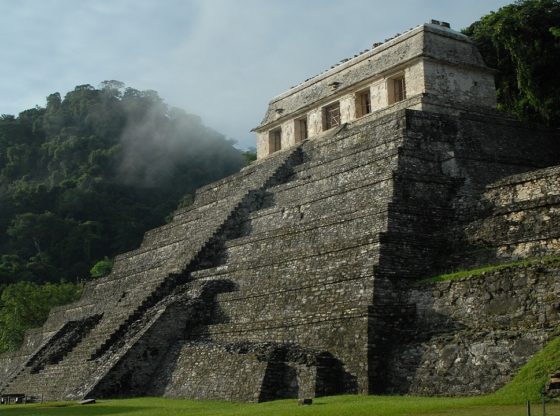
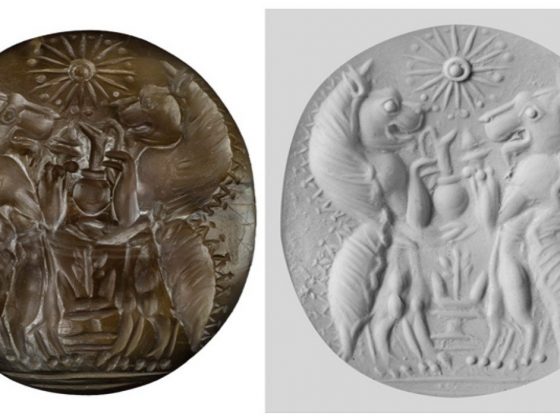
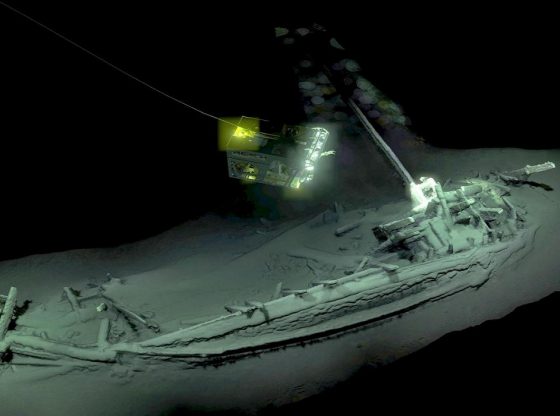

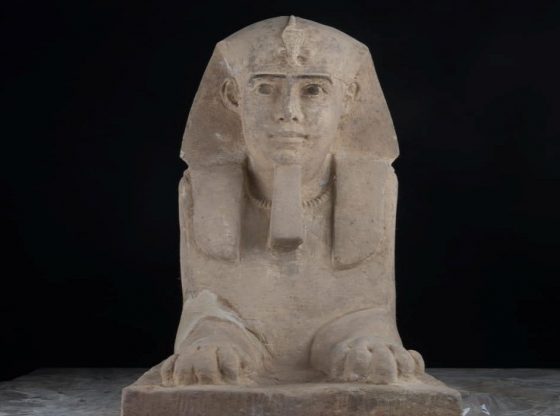


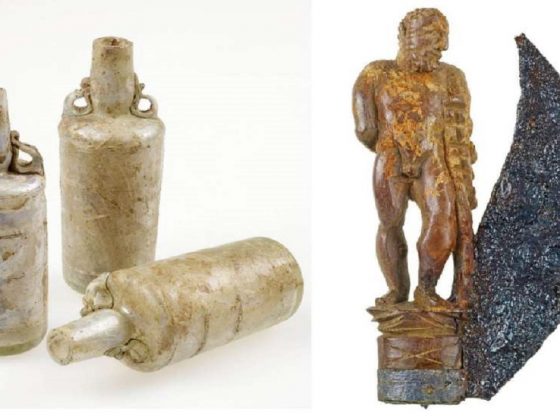

![OpenAI. (2025). ChatGPT [Large language model]. https://chatgpt.com](https://www.illustratedcuriosity.com/files/media/55136/b1b0b614-5b72-486c-901d-ff244549d67a-350x260.webp)
![OpenAI. (2025). ChatGPT [Large language model]. https://chatgpt.com](https://www.illustratedcuriosity.com/files/media/55124/79bc18fa-f616-4951-856f-cc724ad5d497-350x260.webp)
![OpenAI. (2025). ChatGPT [Large language model]. https://chatgpt.com](https://www.illustratedcuriosity.com/files/media/55099/2638a982-b4de-4913-8a1c-1479df352bf3-350x260.webp)








